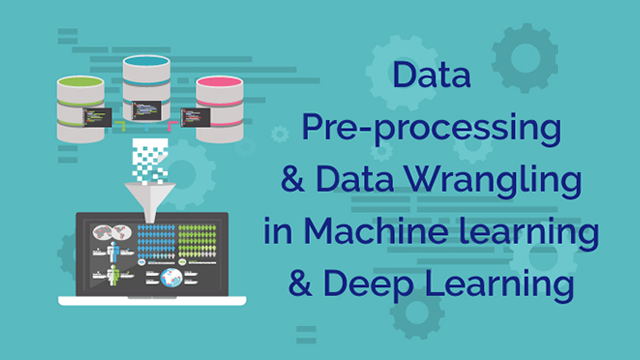Data Preparation, Preprocessing and Wrangling in Deep Learning
Reading Time: 13 Minutes
Introduction to Data Preprocessing
Deep learning and Machine learning are becoming more and more important in today's ERP (Enterprise Resource Planning). During the process of building the analytical model using Deep Learning or Machine Learning the data set is collected from various sources such as a file, database, sensors and much more.
But, the collected data cannot be used directly for performing analysis process. Therefore, to solve this problem Data Preparation is done. It includes two techniques that are listed below -
-
Data Preprocessing
-
Data Wrangling
Data Preprocessing Architecture
Data Preparation is an important part of Data Science. It includes two concepts such as Data Cleaning and Feature Engineering. These two are compulsory for achieving better accuracy and performance in the Machine Learning and Deep Learning projects.

What is Data Preprocessing?
Data Preprocessing is a technique that is used to convert the raw data into a clean data set. In other words, whenever the data is gathered from different sources it is collected in raw format which is not feasible for the analysis.
Therefore, certain steps are executed to convert the data into a small clean data set. This technique is performed before the execution of Iterative Analysis. The set of steps is known as Data Preprocessing. It includes -
-
Data Cleaning
-
Data Integration
-
Data Transformation
-
Data Reduction
Need of Data Preprocessing
For achieving better results from the applied model in Machine Learning and Deep Learning projects the format of the data has to be in a proper manner. Some specified Machine Learning and Deep Learning model need information in a specified format, for example, Random Forest algorithm does not support null values, therefore to execute random forest algorithm null values has to be managed from the original raw data set.
Another aspect is that the data set should be formatted in such a way that more than one Machine Learning and Deep Learning algorithms are executed in one data set, and best out of them is chosen.
What is Data Wrangling?
Data Wrangling is a technique that is executed at the time of making an interactive model. In other words, it is used to convert the raw data into the format that is convenient for the consumption of data.
This technique is also known as Data Munging. This method also follows certain steps such as after extracting the data from different data sources, sorting of data using certain algorithm is performed, decompose the data into a different structured format and finally store the data into another database.
Need of Data Wrangling
Data Wrangling is an important aspect of implementing the model. Therefore, data is converted to the proper feasible format before applying any model to it. By performing filtering, grouping and selecting appropriate data accuracy and performance of the model could be increased.
Another concept is that when time series data has to be handled every algorithm is executed with different aspects. Therefore Data Wrangling is used to convert the time series data into the required format of the applied model. In simple words, the complex data is transformed into a usable format for performing analysis on it.
You May also Love to Read Anomaly Detection of Time Series Data Using Machine Learning & Deep Learning
Why is Data Preprocessing Important?
Data Preprocessing is necessary because of the presence of unformatted real-world data. Mostly real-world data is composed of -
-
Inaccurate data (missing data) - There are many reasons for missing data such as data is not continuously collected, a mistake in data entry, technical problems with biometrics and much more.
-
The presence of noisy data (erroneous data and outliers) - The reasons for the existence of noisy data could be a technological problem of gadget that gathers data, a human mistake during data entry and much more.
-
Inconsistent data - The presence of inconsistencies are due to the reasons such that existence of duplication within data, human data entry, containing mistakes in codes or names, i.e., violation of data constraints and much more.
Therefore, to handle raw data, Data Preprocessing is performed.
Why is Data Wrangling Important?
Data Wrangling is used to handle the issue of Data Leakage while implementing Machine Learning and Deep Learning. First of all, we have to understand what Data Leakage is?
Data Leakage in Machine Learning and Deep Learning
Data Leakage is responsible for the cause of invalid Machine Learning/Deep Learning model due to the over optimization of the applied model.
Data Leakage is the term used when the data from outside, i.e., not part of training dataset is used for the learning process of the model. This additional learning of information by the applied model will disapprove the computed estimated performance of the model.
For example when we want to use the particular feature for performing Predictive Analysis, but that specific feature is not present at the time of training of dataset then data leakage will be introduced within the model.
Data Leakage can be demonstrated in many ways that are given below -
-
The Leakage of data from test dataset to training data set.
-
Leakage of computed correct prediction to the training dataset.
-
Leakage of future data into the past data.
-
Usage of data outside the scope of the applied algorithm
In general, the leakage of data is observed from two primary sources of Machine Learning/Deep Learning algorithms such as feature attributes (variables) and training data set.
Checking the presence of Data Leakage within the applied model
Data Leakage is observed at the time of usage of complex datasets. They are described below -
-
At the time of dividing time series dataset into training and test, the dataset is a complex problem.
-
Implementation of sampling in a graphical problem is a complex task.
-
Storage of analog observations in the form of audios and images in separate files having a defined size and timestamp.
How is Data Preprocessing performed?
Data Preprocessing is carried out to remove the cause of unformatted real-world data which we discussed above.
First of all, let's explain how missing data can be handled. Three different steps can be executed which are given below -
-
Ignoring the missing record - It is the simplest and efficient method for handling the missing data. But, this method should not be performed at the time when the number of missing values are immense or when the pattern of data is related to the unrecognized primary root of the cause of statement problem.
-
Filling the missing values manually - This is one of the best-chosen methods. But there is one limitation that when there are large data set, and missing values are significant then, this approach is not efficient as it becomes a time-consuming task.
-
Filling using computed values - The missing values can also be occupied by computing mean, mode or median of the observed given values. Another method could be the predictive values that are computed by using any Machine Learning or Deep Learning algorithm. But one drawback of this approach is that it can generate bias within the data as the calculated values are not accurate concerning the observed values.
Let's move further and discuss how we can deal with the noisy data. The methods that can be followed are given below -
-
Data Binning
In this approach sorting of data is performed concerning the values of the neighborhood. This method is also known as local smoothing.
-
Preprocessing in Clustering
In the approach, the outliers may be detected by grouping the similar data in the same group, i.e., in the same cluster.
-
Machine Learning
A Machine Learning algorithm can be executed for smoothing of data. For example, Regression Algorithm can be used for smoothing of data using a specified linear function.
-
Removing manually
The noisy data can be deleted manually by the human being, but it is a time-consuming process, so mostly this method is not given priority.
To deal with the inconsistent data manually, the data is managed using external references and knowledge engineering tools like the knowledge engineering process.
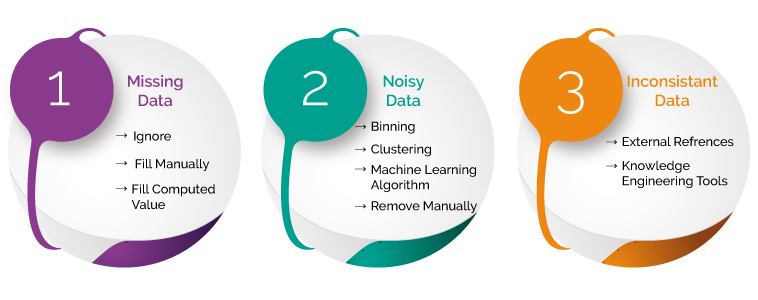
How is Data Wrangling performed?
Data Wrangling is conducted to minimize the effect of Data Leakage while executing the model. In other words if one considers the complete data set for normalization and standardization, then the cross-validation is performed for the estimation of the performance of the model leads to the beginning of data leakage.
Another problem is also observed that the test model is also included for feature selection while executing each fold of cross-validation which further generates bias during performance analysis.
The effect of Data Leakage could be minimized by recalculating for the required Data Preparation during the cross-validation process that includes feature selection, outliers detection, and removal, projection methods, scaling of selected features and much more.
Another solution is that dividing the complete dataset into training data set that is used to train the model and validation dataset which is used to evaluate the performance and accuracy of the applied model.
But, the selection of the model is made by looking at the results of test data set in the cross-validation process. This conclusion will not always be valid as the sample of test data set could vary, and the performance of different models are evaluated for the particular type of test dataset. Therefore, while selecting best model test error is overfitting.
To solve this problem, the variance of the test error is determined by using different samples of test dataset. In this way, the best suitable model is chosen.

Data Preprocessing vs Data Wrangling
Data Preprocessing is performed before Data Wrangling. In this case, Data Preprocessing data is prepared exactly after receiving the data from the data source. In this initial transformations, Data Cleaning or any aggregation of data is performed. It is executed once.
For example, we have data where one attribute has three variables, and we have to convert them into three attributes and delete the special characters from them. It is the concept that is performed before applying any iterative model and will be executed once in the project.
On the other hand, Data Wrangling is performed during the iterative analysis and model building. This concept at the time of feature engineering. The conceptual view of the dataset changes as different models is applied to achieve good analytic model.
For example, we have data containing 30 attributes where two attributes are used to compute another attribute, and that computed feature is used for further analysis. In this way, the data could be changed according to the requirement of the applied model.
Tasks of Data Preprocessing
Different steps are involved for Data Preprocessing. These steps are described below -
-
Data Cleaning
This is the first step which is implemented in Data Preprocessing. In this step, the primary focus is on handling missing data, noisy data, detection, and removal of outliers, minimizing duplication and computed biases within the data.
-
Data Integration
This process is used when data is gathered from various data sources and data are combined to form consistent data. This consistent data after performing data cleaning is used for analysis.
-
Data Transformation
This step is used to convert the raw data into a specified format according to the need of the model. The options used for transformation of data are given below -
- Normalization - In this method, numerical data is converted into the specified range, i.e., between 0 and one so that scaling of data can be performed.
- Aggregation - The concept can be derived from the word itself, this method is used to combine the features into one. For example, combining two categories can be used to form a new group.
- Generalization - In this case, lower level attributes are converted to a higher standard.
-
Data Reduction
After the transformation and scaling of data duplication, i.e., redundancy within the data is removed and efficiently organize the data.
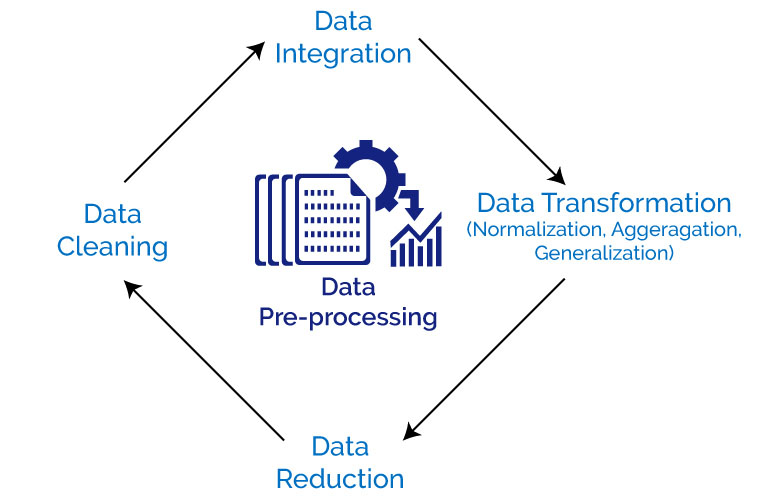
Tasks of Data Wrangling
The tasks of Data wrangling are described below -
-
Discovering
Firstly, data should be understood thoroughly and examine which approach will best suit. For example: if have a weather data when we analyze the data it is observed that data is from one area and so primary focus is on determining patterns.
-
Structuring
As the data is gathered from different sources, the data will be present in various shapes and sizes. Therefore, there is a need for structuring the data in proper format.
-
Cleaning
Cleaning or removing of data should be performed that can degrade the performance of analysis.
-
Enrichment
Extract new features or data from the given data set to optimize the performance of the applied model.
-
Validating
This approach is used for improving the quality of data and consistency rules so that transformations that are applied to the data could be verified.
-
Publishing
After completing the steps of Data Wrangling, the steps can be documented so that similar steps can be performed for the same kind of data to save time.
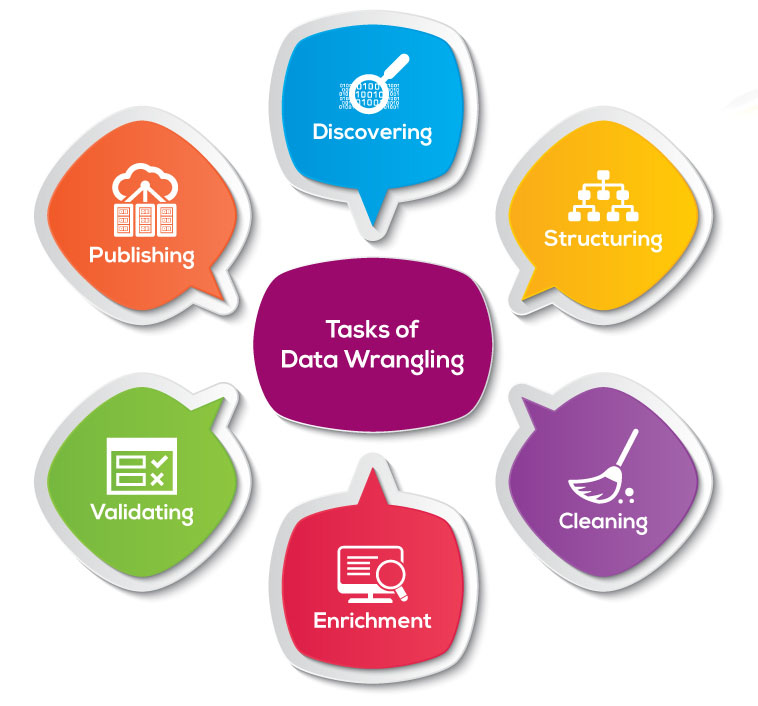
How Data Wrangling improves Data Analytics?
With the advancement in the technology and generation of data, data is collected from various sources. Therefore, to manage data in different formats Data Wrangling is necessary.
As the simple analytics methods alone are not feasible for complex problem statement, Data Wrangling is introduced which simplify the analysis process of a complex issue.
In this way, Data Wrangling is used for improving the analysis process of complex problems.
Data Wrangling vs ETL
Data Wrangling technology is used by business analysts, users engaged in business and managers. On the other hand, ETL (Extract, Transform and Load) is employed by IT Professionals. They receive the requirements from business people and then they use ETL tools to deliver the data in a required format.
Data Wrangling is used to analyze the data that was gathered from different data sources. It is designed specially to handle diverse and complex data of any scale. But in the case of ETL, it can handle structured data that was originated from different databases or operating systems.
The primary task of Data Wrangling method is to manage the newly generated data from various sources for analysis process whereas the goal of ETL is to extract, transform and load the data into the central enterprise Data Warehouse for performing analysis process using business applications.
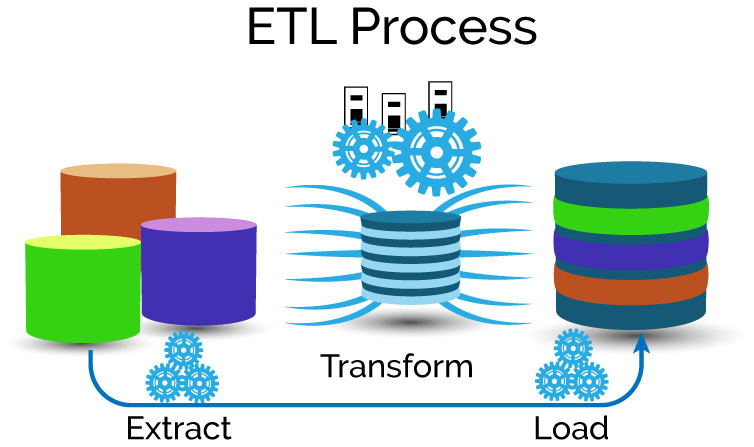
Image Source - blog.appliedinformaticsinc.com
Data Preprocessing Tools
-
Data Preprocessing in R
R a framework that consists of various packages that can be used for Data Preprocessing like dplyr etc
-
Data Preprocessing in Weka
Weka is a software that contains a collection of Machine Learning algorithms for Data Mining process. It consists of Data Preprocessing tools that are used before applying Machine Learning algorithms.
-
Data Preprocessing in RapidMiner
RapidMiner is an open-source Predictive Analytics Platform for Data Mining process. It provides the efficient tools for performing exact Data Preprocessing process.
-
Data Preprocessing in Python
Python is a programming language that provides various libraries that are used for Data Preprocessing.
Data Wrangling Tools
-
Data Wrangling in Tabula
Tabula is a tool which is used to convert the tabular data present in pdf into a structured form of data, i.e., spreadsheet.
-
Data Wrangling in OpenRefine
OpenRefine is an open source software that provides a friendly Graphical User Interface (GUI) that helps to manipulate the data according to your problem statement. Therefore, it is a highly useful software for the non-data scientist.
-
Data Wrangling in R
R is an important programming language for the data scientist. It provides various packages like dplyr, tidyr etc. for performing data manipulation.
-
Data Wrangling using Data Wrangler
Data Wrangler is a tool that is used to convert the real world data into the structured format. After the conversion, the file can be imported into the required application like Excel, R, etc. Therefore, less time will be spent on formatting data manually.
-
Data Wrangling in CSVKit
CSVKit is a toolkit that provides the facility of conversion of CSV files into different formats like CSV to JSON, JSON to CSV and much more. It makes the process of data wrangling easy.
-
Data Wrangling using Python with Pandas
Python is a language with Pandas library. This library helps the data scientist to deal with complex problems efficiently.
-
Data Wrangling using Mr. Data Converter
Mr. Data Converter is a tool that takes Excel file as an input and converts the file into required formats. It supports the conversion of HTML, XML and JSON format.
How Can Don Help You?
Developing an analytic model using Machine Learning and Deep Learning is not an easy task. Data has to be prepared which takes 70 percent of the whole pipeline.
Data Preprocessing and Data Wrangling are necessary methods for Data Preparation of data. They are used mostly by Data Scientist to improve the performance of the analytical model.
Data Cleansing Solutions
Don Data Cleansing solutions offer powerful Data Cleaning with Enterprise Data Quality. Powerful, Reliable and easy-to-use Data Quality Management Solutions with Data Profiling, Data Discovery, Data Migration, Data Enrichment and Data Synchronization.
Data Preparation Solutions
Transform to a Data-Driven Enterprise with self-service Data Preparation. Use Machine Learning guides to identify errors in your data set. Data Preparation as-a-service on Public, Private or Hybrid Cloud. Run Big Data Preparation for Real-Time Insights with Apache Spark.
Knowledge Discovery
Don Knowledge Discovery Services make you understand data and gather maximum information out of it with Pattern Detection using Data Mining, Data Mapping and Clustering.

